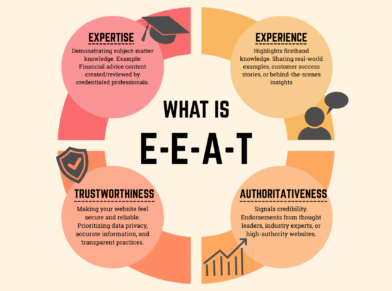WHY PRINT ADVERTISING VS DIGITAL MARKETING IS A MISTAKE
Year after year consumers spend increasingly fewer hours away from their devices. They work, shop and engage socially in online platforms, consuming digital media at a feverish pace. In one year, from 2015 to 2016, the number of hours Americans spent in front of a screen rose about 90 minutes. That average now tops about 11 hours of daily screen time.
Given our demand for digital, it does make sense to invest many ad dollars online, but writing off all non-digital media is a big mistake.
Think paper content is obsolete? We have news for you.
As we’ll see, multi-channel marketing strategies that utilize both can tap into the benefits of traditional print and paper advertising while leveraging the omnipresence of those online.
Multi-Channel Marketing Defined
Let’s start by laying the groundwork for what a well-rounded marketing strategy might look like.
Simply put, it’s a plan that uses on and offline avenues to get your brand in front of as many potential customers as possible. One strategy; multiple platforms. Dedicating yourself exclusively to digital marketing tactics may yield results initially, but utilizing analog channels like direct mail or print ads has the potential to target leads over the long-term.
Another way to frame it: multi-channel marketing makes your product or service available on the platforms your customers frequent, making it easy for them to make purchases when and where they want.
Deconstructing Digital Marketing
Don’t get us wrong. We are huge proponents of online advertising. It’s measurable, it’s malleable and it’s effective. Digital ads can be specifically targeted to your audience and changed as the data demands.
However, it’s important to remember that just because something’s more trackable doesn’t mean other avenues don’t have value in building and solidifying your brand.
Depending on the type of campaign you want to run, digital may fall short. For example, one study at San Jose State University found customers are more likely to browse your ad, scanning for keywords before quickly moving on. They’re consumed and processed more quickly. If your goal is to disseminate important and concrete product information, this selective reading and spotty attention span associated with some digital media could inhibit your sale.
The point is, the instantaneous access provided by an Instagram ad or Google PPC campaign is a powerful tool, and really, the benefits of a well-planned digital marketing strategy cannot be overstated. Still, they’re not always the best, and certainly not the only, way to play.
Investigating Print Ads
This brings us to the paper-based content that forms more traditional advertisements. Generally speaking, it requires less brainpower to process and is more memorable than digital media. Because it’s tangible, the brain tends to categorize physical material differently. Memories are created with more context–where you were, how it felt to hold it–offering a more sensory and emotional experience of the advertisement.
One 2009 study conducted by Bangor University and branding agency Millward Brown found that print ads and paper content increased the brain’s connection to internal feelings, implying that customers were more likely to “internalize” the ad.
Another study conducted for the U.S. Post Office found:
- Viewers engaged with paper ads for extended periods of time.
- Respondents were able to recall more information from the ad (including company name) more than a week after they first viewed it.
- The centers of the brain that are responsible for regulating value and desire were highly active when viewing physical ads.
Essentially, it’s like the difference between receiving an email or Facebook message on your birthday, and getting a hand-written card in the mail. Both are special, but one stands out more than the other.
Planning Consumer Oriented Content
Without question, when planning your outreach efforts, go where the consumer is. This may vary based on your market.
If they have a preferred channel, you need to be on it. This may mean reaching out more than once so you catch them at the right time, in the right place and with the right message.
Make sure you’ve researched your target audience thoroughly to find out where they dwell both online and off. Create customer surveys to collect data. Use buyer personas in-house. Rely on A/B testing to measure the effectiveness of your digital marketing collateral.
You may find some products like luxury items or brands with unique services lend themselves better for print materials. Others with less emotional motivation or merchandise with more SKUs than visuals might be more effective for online channels.
A Message to Marketers
We live in a digital world, but that doesn’t mean the world is entirely digital. Your advertisements shouldn’t be either. Print ads still hold power. When paired with the right online marketing initiatives, they’re likely to drive digital sales. Mix up your media to broaden and bolster your brand experience.
Need a little help? Let’s strategize together.
TIPS FOR HIRING A DIGITAL MARKETING AGENCY
If you’ve decided that you’re not a marketer or simply don’t have time for it (you’re an attorney, after all, and are focused on billable hours), you may have decided it’s time to outsource your digital marketing efforts. It’s a big decision. Your time, reputation and hard-earned revenue are at stake. Consider the following factors when selecting the right marketing partner.
Beware the Auto-Renewal Contract
Everybody knows about the auto-renewal contract. They’re not exclusive to consumer contracts, like those for health club memberships, video-streaming services or computer software. That’s right, auto-renewals are often included in marketing agency contracts.
Make sure you look out for any auto-renewal clauses, euphemistically called evergreen clauses. If you contract for 12 months of marketing services, but you fail to provide advanced notice of cancellation as stated in the contract (usually 90 days), you’re locked in for another 12 months. So, if you’re not happy with the agency you’ve hired, well…
The auto-renewal contract can be so punitive that 22 states have statutes that limit auto-renewals. In 2017 alone, there have been over 50 auto-renewal related bills in state legislatures. When the government gets involved, there’s an issue. One New Jersey legislator dubbed them “zombie clauses” because they never seem to die.
Make Sure You Own Your Own Content
You might be thinking, Of course I own my own content, it’s my content, I paid for it! That sounds logical, I know, but you’ll definitely want to discuss content ownership prior to entering into an agency contract. Here’s the rub on content generated by some agencies: unless you’ve negotiated a specific provision in the contract, the agency might own the rights to their work even after you’ve paid for it.
What does not owning your own content mean? It means that if you move to another agency or bring your marketing in-house, all of the content on your website is gone. Pages of content will have to be reconstructed and optimized, blogs the agency has written on your behalf can’t be utilized, and months, maybe years, of analytics information is gone. So, basically, you can expect to have zero online presence for weeks, maybe months.
Be Sure to Target the Right Kind of Leads
A recent conversation with an estate planning attorney who had utilized a lead company disguised as a digital marketing agency can be summarized with this statement: “The leads were junk.” Sure, they’d delivered him one hundred “leads” per month as promised, but he soon discovered they were little more than respondents to a “check the box” survey. He spent hours contacting them, only to learn that their definition of a lead was little more than a name and a phone number. Those aren’t leads.
What Does a Digital Marketing Agency Bring to the Table?
A reputable digital marketing agency will sit down with you to fully understand your expectations, your business, and your style, then put together a comprehensive game plan based on your budget that will utilize any or all of the following elements:
- Search Engine Optimization (SEO)―sure, you’ve got a website, but can anyone find it?
- Content Management―are you providing valuable and educational content?
- Social Media―are you finding and keeping potential clients engaged?
- Reputation Management―do you monitor, manage and act on your online reviews?
- Listing Management―are you managing your online presence?
- Paid Search―are you reaching your audience online, at the optimal time, through targeted search engine advertising?
Remember, marketing is about developing, over time, a demand for a product or service by fulfilling a customer’s need. Can marketing generate leads? Of course, it can. But great marketing finds prospective customers that are well-informed, educated and who understand how you differentiate yourself and your practice from the rest of the marketplace.
According to The National Law Review, 96% of people seeking legal counsel use a search engine. But here’s the best part― almost 75% of them contact only one attorney prior to securing their services. What does this mean? It means that your online presence better be optimal.
If you’ve decided that your practice could use the expertise of a digital marketing agency that specializes in the legal profession, contact Accelerate Online Marketing today. We make digital law firm marketing easy, and we do it while closely adhering to the Texas Bar Association’s Disciplinary Rules of Professional Conduct.
COMMUNICATE BETTER: WEB DEV LINGO 101
The company website is the new business card. It’s the face you present to the world – a digital handshake, your first impression. As a mission-critical part of any digital marketing plan, getting it right is important.
Maybe you’re creating one for the first time. Perhaps your site simply needs a little updating as part of a brand rediscovery. Whether you’re building it in-house or using a digital marketing and web development firm, you and your team need to speak the same language.
This glossary of basic web development terms will help.
- CMS or Content Management System– WordPress and Drupal are popular examples of a CMS; a software system focused on web content. It creates an easy way for users to make text and image updates to their site without using HTML and allow your development team to add advanced features.
- HTML or Hypertext Markup Language- These are the building blocks of your site. Each web page has a markup language that structures the content therein and has the ability to describe it. Search Engines recognize this as the most basic language on the web, followed by CSS, PHP, ASP, Javascript, jQuery (see below).
- CSS or Cascading Style Sheets- This file tells browsers, mobile phones, tablets, projectors, and other devices how to display your site. Where HTML pages create a foundation, a CSS denotes how it should be styled. This includes regulating the consistency of essential elements like logos, fonts, images, menu pages, etc.
- IA or Information Architecture- Without well-designed, organized text content, your site is nothing but pretty pictures. IA ensures your site is easy to navigate and displays the top features using a planned sitemap and wireframes for each page.
- JavaScript- Programming language #3. This one comes to us from Sun Microsystems Corporation. Web apps use this language for motion elements like drop-downs, scroll-overs, or simple animations. Search Engines are still unable to read Javascript files, but they’re important for your user experience and branding.
- jQuery- This open source JavaScript library uses common functions to accelerate development with complex client-based JavaScript applications. It’s the most popular JavaScript library among programmers, allowing them to easily navigate everything from documents and animations to plug-ins and widgets.
- MySQL- Another open source database management system used in many web applications.
- PHP- Once classified as “Personal Home Page,” today, PHP is understood as an open source, C-like, programming and server-side scripting language. Dynamic websites use them to power millions of open source projects.
- Sitemap- According to our own web development expert, Daniel Edwards, “Sitemap can be a difficult keyword to decipher. It’s both technical and conceptual. Conceptually, it helps drive a site’s navigation and approach. From a technical standpoint, xml feeds illustrate the concept of a website and inform Google how large or small the site is.”
- UI or User Interface/UX or User Experience– Anything a user can view and manipulate on your site or app makes up the user interface. These include the screen itself, cursors, and keyboards as well as the menus. Conversely, the user experience (UX) has to do with a person’s emotions, attitudes, and ease-of-use accessing your website. Improving the UX Design of your site, improves the user experience of your site, making it easier for them to interact with your product or service.
- Wireframe– This “skeletal” foundation of your site is a visual representation of its content sans design. It’s more concerned with the layout structure than the text or graphics that will eventually flesh it out.
Even if your job never requires you to become fully fluent in web design, it’s good to have a basic grasp of the language. The sooner you get your site up and running, the sooner you can focus on driving more web traffic to it.
WHICH HALF OF YOUR MARKETING IS WORKING?
Have you ever thought to yourself, half of my marketing works just don’t know which half?
It’s a common problem that marketers run into and owners definitely face. Some have tried to conquer that problem and I will say there are a lot of things that can be done to figure out which half of your marketing is working.
I would like to go deep on that topic and figure out what we can do to track marketing better and determine what’s actually effective and what is a complete waste of money.
Call Tracking
Some of the tools that we use are call tracking, so what we like to do is track every single phone call that comes in to the business. Ideally we put a dynamic call tracking number on the website. That way each individual user that makes a phone call gets a different phone number. By showing them a different phone number, we know exactly which user triggered the call. By knowing the user, I know which campaign they came in through. The other thing we can do is separate out last click attribution from original click attribution.
Click Attribution
So let me break that down for you. What I mean by that is last click attribution is the last thing that they did before they made a purchase. I attribute that campaign with the visit. Let’s give an example. If somebody saw an ad that you were running on Facebook and came to your website but did not purchase, they left your website and came back a week later and made a purchase. But when they came back, instead of coming through Facebook, they came from google search. Which one of those campaigns actually drove that sale?
Was it the last click or the first click that purchaser made? Well they are both important actually. But I would really like to know whether or not my Facebook campaign was effective and generating more awareness that then brought that customer back later. I would like report, and what we do today is implement some very sophisticated marketing software that allows us to tie back the original time that a visitor came to my website. We know exactly when they came to the website first. When they do identify themselves by making the purchase, I can connect the dots between the final purchase and the first time they visited us.
So now we know the entire life cycle. and we can report back, last click attribution and initial awareness, or first click attribution.
Those are just 2 methodologies that we use to report to clients how we are performing as an agency and which campaigns are performing which ones are winners, which ones are dogs.
5 TRAITS TO LOOK FOR IN A REPUTABLE DIGITAL MARKETING AGENCY
Naturally, with the essential nature of online marketing, thousands of digital marketing agencies are out there offering their services to companies around the globe. As with any business, their levels of competence and reliability vary, so you need to search carefully to find an agency that will work. To help you tell a reliable agency from less reliable ones, here are five things you should look for:
- Transparency: If PPC, SEO, responsive design, and other web marketing terms are gibberish to your ears, they certainly shouldn’t remain that way. A reputable digital marketing agency will not only make sure each aspect of your online marketing strategy is well executed, but they’ll also make sure you understand exactly how it works.
- Continuing partnership: The right agency won’t set everything up just to leave you to your own devices afterward. They will act as reliable consultants to make sure your new traffic converts into clientele.
- Holistic approach: Your audience is everywhere, and you’ll need multiple strategies to reach potential customers. A reputable agency understands this and will employ a wide variety of digital marketing methods to attract traffic.
- Awesome track record: Naturally, a reputable online marketing firm will have a strong history of pleased clients. Take a look through their reviews and see how they’ve helped other companies build a strong online presence and boost revenue.
- Rockstar-grade skill: To be successful in online marketing, skill and expertise are vital. The right agency for your company will employ digital rockstars with the skills, education, and experience needed to implement their strategies effectively.
Transparency, continuity, experience, and customer satisfaction are all important factors to consider when choosing a digital marketing agency to handle your online strategies. Accelerate Online Marketing strives to fulfill all of these qualities, but don’t take our word for it—check out our portfolio, browse our client reviews, and contact us to see how our team of digital rockstars can help you.
WHAT ARE MICRO-MOMENTS IN MARKETING?
People are using their mobile devices more than ever before, and not just for casually browsing the web or actively shopping. Mobile users are highly likely to pull out their smartphone when faced with a dilemma or problem, such as when making purchasing decisions at the store or finding a place nearby to eat. These moments when people use their smartphones for small, everyday tasks, are being referred to as “micro-moments.”
The Research
Research by Google indicates that micro-moments can be divided into four categories:
- I-want-to-know: These are instances when people look up information on their phones, such as something they might have seen in a commercial.
- I-want-to-go: People will look for nearby businesses on mobile devices.
- I-want-to-do: “How-to” searches and consultation with the web for ideas are moments included in this area.
- I-want-to-buy: Prior to making a purchase, people will use their smartphone to evaluate their buying decisions.
The research also indicates that these instances are becoming vastly more common, making it important for businesses to take advantage of these moments.
Micro-Moments Marketing
These micro-moments mean that consumers are more likely to make decisions and try to solve problems in the moment. This has given rise to micro-moment marketing strategies that take advantage of the tendency consumers have to consult the internet at a moment’s notice. To properly take advantage of this phenomenon:
- Make sure your online content is quickly searchable and digestible
- Understand your customers’ needs, including “in-the-moment” needs
- Determine in which moments your brand should come up
- Consider location, time of day, and other contextual elements in developing content
Using these effectively will lead consumers to choose your brand over others by providing helpful information on how it can help them right in the moment.
Using Micro-Moments
Designing content and implementing marketing strategies to make effective use of micro-moments is a task that requires careful planning and keen online marketing expertise. Accelerate Online Marketing can help you put together actionable strategies that will reach your audience right when they need you most, so contact us today!
13 MUST-HAVE MARKETING TOOLS
At Globe Runner, we’re constantly presented with marketing tools to review and hopefully adopt. As we soon discovered, there are hundreds of marketing tools for every conceivable purpose but only a select few are the ones that we just can’t live without. Following are the marketing tools that Globe Runner has perpetually open on browser tabs:
AdWords Editor
PPC Lead Stephanie Bradam says AdWords Editor is “constantly open” on her browser. The tool allows users to make changes in bulk and across multiple accounts, even offline. Apart from the convenience, it’s free — instant brownie points.
Asana
This task management tool is perpetually up on our screens. Asana acts as the central nervous system for the agency, the platform from which we assign tasks, determine work capacity and record time. “It’s great for listing and tracking tasks as well as figuring out what’s going on,” said account manager Jenna Yoder. One fun feature of Asana is the occasional unicorn that appears when a task is checked off.
Canva
“Just about the easiest way to whip up banners, collages, social media headers and what-have-you” is how director of brand strategy Alicia Kan described Canva. The platform offers excellent pre-sized templates, easy drag-and-drop functionality and, if you’re lacking pictures, the option to buy good looking visuals for $1.
CODA2, Dreamweaver and Atom
Our web developers Daniel Edwards, Johnny Rodriguez and Jeff Baker use these “integrated development environments” (their words) on a daily basis. “All of them are like multiple programs rolled into one,” said Johnny. “It’s just a matter of preference on which tool to use. Since a visual interface is easier for me, I tend to use Dreamweaver.”
Google Analytics
Given that Globe Runner’s core competency is SEO, Google Analytics is always one of the first tools we check everyday to look at the status of clients’ websites. Their performance on Google Analytics tells us whether the strategies and tactics we’re employing are working, whether that be visitors to the blog or sales from e-commerce. Installing Google Analytics on a client’s site is always the first priority whenever we onboard a client, in order for us to work from a common baseline and to provide tangible metrics going forward.
Google Sheets
Sorry Bill Gates, but the sharing capabilities of Google Sheets give it the edge over Excel. “You can share [files] in real-time, with hardly any need to send emails back and forth,” said Ashley Bonner, quality manager. We’ve used Google Sheets for various purposes, from silo documents to content calendars like this one we made for 2016.
Hootsuite
According to Globe Runner’s head of content Zain Haidar, one of Hootsuite‘s main benefits is the functionality for planning and rescheduling social media posts across multiple accounts. “You can plan posts weeks in advance which is great,” he said. (Now if only Hootsuite could improve a rather clunky interface, our joy would be immeasurable.)
Moz.com

Apart from having various tools for 0nline marketing, Moz has an excellent video series we follow called Whiteboard Friday (usually over a Friday team lunch, like the one we’re having in the picture). Topics covered in the videos range from the latest ranking trends to male programmer dress tips.
Moz’s Beginner’s Guide to SEO is still one of the best introductions to the field to be found. Which is why Globe Runner staff are tasked with reading this guide as part of their onboarding.
PandaDoc
A fairly recent addition to our favorite marketing tools list, PandaDoc eliminates the drudgery and hours involved in proposal writing. The tool allows users to create a library of commonly used content, create templates and automate sending. “It makes it easy for me to collaborate [with others] on a proposal,” explained Globe Runner CEO Eric McGehearty. “It also organizes my sales pipeline.”
Passpack
Before Passpack, we were like every other business: Storing passwords in a common file that could be accessed by multiple internal users. After one too many ‘who changed the password!?’ conversations, we settled on Passpack to be the official repository. “Whenever I forget a password, it’s Passpack to the rescue,” said digital strategist Donnie Hanes. Not only is it convenient, but Passpack’s two-step login gives us an additional, reassuring layer of security.
RGB to Hex
Ever had to recommend colors for websites? Recreate palettes using online logos? Using Pantone colors as a guide is great for print but when it comes to websites, hex codes rule. So if you and your developer can’t agree on the exact shade of blue, use hex codes as a common basis for discussion. RGB to Hex is a simple calculator where you enter the RGB values and it spits out the hex code.
Screaming Frog
Screaming Frog is an SEO tool that crawls websites for data such as title tags, meta descriptions and external links. The data is served up in spreadsheet form so a user can easily find errors and issues at a glance instead of manually combing through a site. It’s especially useful for larger sites with hundreds of pages. Screaming Frog is an essential part of every SEO audit we do for clients.
SEM Rush
A must-have for any SEO, SEM Rush shows a site’s organic and paid traffic, keywords it’s ranking for, backlinks, competitive set and more. “It’s invaluable in researching keywords and identifying keyword opportunities,” said quality team lead Brian Meller. SEM Rush also allows domain comparison for up to three properties for quick top-level competitive analyses.
What marketing tools are must-haves in your position? Share them below as a comment.
CAMPAIGN MANAGEMENT IN 3 SIMPLE STEPS
Executing a successful campaign is as detail-oriented and time-intensive as preparing for battle. Knowing the breakdown of successful campaign management can really take the daunting factor out of the equation so that you aren’t afraid to take the first step.
COURTESY ANDY DOLMAN – WIKIMEDIA COMMONS
With the many analytics tools and software available to us, it can be hard to know where to start. The best way to start is by focusing on one element at a time instead of being overwhelmed by the bigger picture. The three main elements involved in successful campaign management include:
1. Data for campaign management
Start with acquiring a clear understanding of your customer:
- Who are you talking to?
- How can you effectively market to them?
- What are their needs?
- How is your product or service the solution?
Other customer data includes age, gender, ethnicity, family and marital status, employment status and income level. Also, knowing which customers are your most valuable buyers is important because it helps you further focus your efforts.
The more data you acquire, the better because it paints a greater picture of your customers. Use this data to understand their needs and answer the questions that build the basic buying process:
- What do you do?
- So what about what you do? (build awareness)
- Why are you better than…
- Do I need your product/service?
- How do I get your product/service?
- I got it, I’m on it.
To get these answers, you can look at particular marketing communications to understand where potential customers are in the process and take them from one stage to the next until they become your loyal customers.
2. Content
No campaign is complete without implementing content. Now that you know who your customers are, you need to focus on what messaging to send them and how to relay that message to your customer base.
How do content and customers come together? If you know that your customer favors a certain organic product and likes discounts, you can share information in that realm that touts you as the industry thought leader. How about a blog post about when to buy organic to get the best deals? You can also share information about sales during peak season for a certain vegetable or fruit.
3. Execution
You now have an idea of what to send to whom and a better sense of your story. Although your messaging is clear, the next step is to determine how to share it in the most effective way possible. Will a push notification be more effective than a direct mail piece?
Communicating your information through effective storytelling is the way to acquire and retain customers. Reach out the wrong way and you risk turning potential customers away.
Taking the right steps toward successful campaign management means making sure you get each step right before taking the next one. Globe Runner can help you turn your campaign ideas into action by walking you through these steps so you better understand your root customers and messaging. Contact us today!
3 QUICK TIPS TO IMPROVE YOUR DIGITAL MARKETING STRATEGY
by Samantha Arigapudi
Digital marketing has become the norm, replacing the term marketing altogether. As an evolved form of traditional marketing, digital marketing uses the web and digital channels to connect consumers with brands and brands with partners to help each other grow in this dynamic digital age. Digital touch points such as tablets, smartphones and wearable devices are becoming more ubiquitous around the world.
As the digital world changes with every new invention, app and upgrade, it can become a challenge to keep up with today’s digital marketing needs and outlets. Digital marketing however is a practice essential to modern marketing and here are some easy ways to help you improve your digital marketing.
#1 Focus on Customer Acquisition
“Content is king,” is a saying that’s foundational to digital marketing. Use content creatively to define your company and what you offer to acquire your target audience so they too can spread your creative word.
Before you start, set up acquisition goals for your digital marketing and create a timeline with goals working backwards from your end-goal. What steps do you need to take? Where can you improve your content? Have you identified your keywords and attractive links?
A must of digital marketing is to have web traffic and to gain traffic to your website, blog and e-commerce store. To do so, it’s important to share your content in a smart way. Social media platforms such as Facebook, Twitter, Instagram and Vine are all effective ways to draw a new crowd to your website, and other methods such as search and display may also help you optimize your media plan.
#2 Examine Your SEO
In 2014 until now, SEO’s impact has grown 29% for B2C brands. It is now just as important as email for a more positive ROI. Hiring an outside company to evaluate your SEO is a great way to see where you fall on the map in your industry and get a step-by-step list of how to improve your digital presence. Get a report that allows you to understand the quality of each of your website’s pages and how they compare with the quality of your competitors’ pages.
A good starting point for any SEO strategy is to first determine who you have to beat! Look at your competitors and do a thorough competitor analysis—what niches and keywords do they seem to be targeting? Do what your competitors are doing right to get in front of them on the search results page.
#3 Focus on Retention Rates
Customer retention has unique challenges of its own and to keep up, you need to react to your messaging. Where have your customers gone? Are competitors stealing your base? Is your customer turned off by bland communications that are no longer personalized and engaging? Concentrate on the customers that are more likely to convert based on their positions in the buying cycle, which will improve your company’s digital-marketing efficiency.
Deliver the excellent experience customers expect by interacting with them through multiple digital outlets with engaging and more importantly, genuine content. Constantly reevaluating your overall digital marketing strategy is one of the best ways to stay ahead of your competition, acquire new customers, retain your brand ambassadors and produce more personalized experiences.
What is your digital marketing tip?















